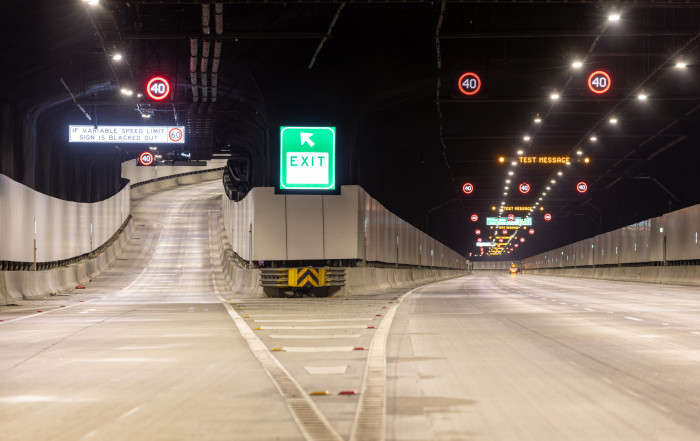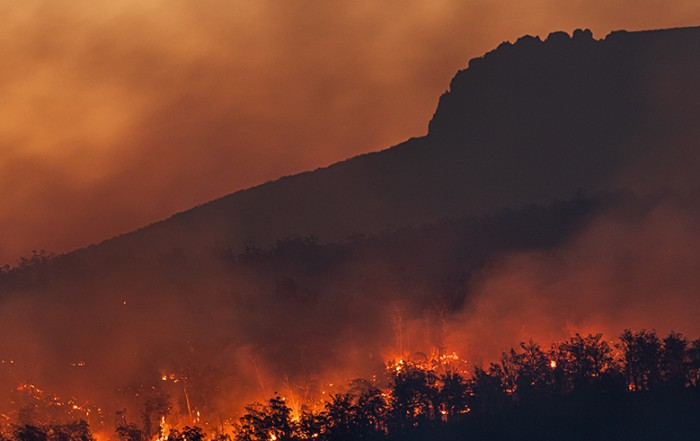Opinions
At this time of uncertainty it has given a number of us time to think and ponder some of the more interesting or controversial areas of tunnelling and life. The ATS will be presenting these pieces of writing from our membership and we welcome submissions.
The conditions of the article publication are:
-
Author must be an ATS member
-
Writing must have at least a tenuous link to tunnels or tunnelling
-
Pieces shall be reviewed and chosen by the ATS Executive
Please submit your article to ats@engineersaustralia.org.au with the subject line Tunnel Thoughts.
50 years of tunnel lighting
By John Rogers A fundamental safety requirement is for drivers to have adequate visibility when approaching the tunnel, at the moment of entry, within the tunnel and when exiting. To provide adequate visibility, lighting systems are designed to overcome the “black hole” effect at the entry portal during daylight hours. Such lighting is energy intense, requiring up to three hundred kilowatts at each portal that must be adjusted downward as ambient daylight declines approaching nightfall or on overcast and rainy days. The process reverses at dawn. As the driver enters the tunnel their eyes gradually adapt to the lower lighting level which can be progressively reduced until a lower constant lighting level can be applied in a long tunnel. This progressive lighting reduction for visual adaptation is a function of stopping distance and time so the design speed for the tunnel and the entry road gradient dictates the distance over which the portal boost lighting is installed. At the exit, the eye adapts much faster to increasing daylight and boost lighting is provided for the driver to have adequate visibility in their rear-view mirrors. Tunnel lighting innovations between the 1960s and 1990s Construction of major tunnel works in Sydney commenced in the late 1960’s. The first, Sydney Domain Tunnel, was designed for illuminance conditions similar to methods applied to interior lighting. Mascot Tunnel followed soon after, also designed for illuminance. Both cut and cover tunnels employed the technology of the time: fluorescent lamps. In that era the only other [...]
The Observational Method in Tunnelling
The Observational Method in Tunnelling Diane Mather, Design Manager, Inland Rail, ARTC Alex Gomes, Chief Technical Principal - Tunnels, SMEC Background The design of tunnels and underground structures often involves a myriad of technical disciplines, which can range from geosciences up to architectonics and electro-mechanics, depending on the tunnel purpose. However, because tunnels are invariably built within the ground, a naturally formed material is an inherent part of the tunnel structure, geotechnical engineering and structural design stand out as disciplines ubiquitous to most types of underground works, as they are necessary for the assessment of the ground and the ground-structure interaction. While material properties and behaviour are better understood and can be more precisely modelled in structural mechanics, the ground is a complex material and geotechnical engineering is by far not an exact science. It must deal with the intrinsic limitations associated with the engineers’ ability to explore the ground and determine its composition and properties, as well as with the constraints associated with the modelling and estimation of its behaviour during construction. Due to these uncertainties, the tunnel designer must be cognisant that models and computation results should be understood as representing potential scenarios and outcomes, as opposed to being taken as precise predictions. In projects with complex sub-surface settings, anticipated ground conditions and response to excavation can only be confirmed once excavation is carried out. Hence, to achieve maximum economy and assurance of safety, a natural solution consists of the design of scalable engineering solutions that can be [...]
Towards model Australian underground works contracts: regulatory baseline reporting
Towards model Australian underground works contracts: Regulatory Baseline reporting—fairness when government rules and regulations change By Professor Arnold Dix Scientist & Lawyer, Professor of Engineering CEO & Managing Director—ALARP Consulting Group Starting with the Sydney Harbour Tunnel, which opened in 1992, Australia has delivered an impressive set of urban tunnel infrastructure projects using unconventional contract methods. While the rest of the world has moved towards industry-standard risk-sharing contract forms (for example the FIDIC Emerald Book 2019), Australian practice has been to use bespoke contractual forms with increasing offloading of risk to the Contractor. So, while Australia has delivered an enviable list of projects, the unequal risk allocation has taken its toll. From 1992 to now, the number of Australian owned first-rank Contractors and consultants in the infrastructure delivery business has fallen to a few. This paper advocates returning to a more appropriate risk-sharing format and proposes setting Regulatory Baselines in contracts to deal with regulatory risks, analogous to Geotechnical Baselines. The greatest financial, technical, approval and time burdens on underground works projects in Australia are a result of regulatory uncertainty and change. Free Trade Agreements and Investor Treaties provide a mechanism for investor-state dispute settlement to foreign companies—a set of rights unavailable to local companies. Foreign companies get to claim potentially billions in compensation through an extraterritorial tribunal if they believe their rights have been infringed. No such mechanism is available to local companies. Leaving this distinction between foreign and domestic companies to one side, despite the potentially large impact [...]
Help I can’t breathe — the battle against complacency on climate change
If engineers do one thing well it is listen to the design engineers, evaluate the numbers and their results and as such construct safe and usable structures built both high and dug deep in the ground. The science of climate change is unequivocal and the evidence (bushfires, flooding, cyclones and droughts) is manifesting itself at a faster and faster rate as society seems to carry on oblivious to the enormity of the consequences. Today it is a clear and present threat to civilisation, a threat that should have been addressed 40 years ago and is now front and centre for us, our grown up children and their children to do the heavy lifting in solving. Before the eighteenth century, when humans in the industrial west began to burn coal, oil and gas, our atmosphere typically contained about 280 parts per million of carbon dioxide. We have to recognise that those are the conditions 'on which civilization developed and to which life on earth is adapted.' Now, as the use of fossil fuels spreads through the world, the amount of carbon in the atmosphere is skyrocketing — we’re now well over 415 parts per million of CO2 in the atmosphere. (1) This Co2 has formed a blanket around the planet trapping the heat and so warming the atmosphere. Our oceans have absorbed 90% of this trapped heat having a catastrophic effect on the climate and the earth, such as detrimentally changing weather patterns forever and bleaching the coral reefs to extinction. [...]
Critical Velocity and Tunnel Smoke Control Part Two
Filling the NFPA 502 void Michael Beyer, Conrad Stacey, Arnold Dix This article should be read as continuation of our earlier part one note to the ATS about Annex D of (NFPA 502, 2020). It proposes a value for critical velocity, filling the void to be left by the intended removal of Annex D from NFPA 502 in a practical way, and also offers internationally acknowledged fire response strategies, and air speeds that could be used in those strategies, for smoke control in tunnel fires. The tunnel ventilation system plays a key role in providing acceptable air quality for tunnel users during normal operation as well as in smoke control and providing tenable escape conditions during a fire. The realisation of the first task is often relatively clear, whereas the control of the tunnel ventilation system during a fire is subject to debate. A comprehensive overview of different ventilation control approaches during a fire is given in (Sturm, Beyer, & Rafiei, 2015), but will be more briefly summarised in this article. Read the article below or download a copy in PDF format by following this link.
Critical velocity and the significance of the imminent retraction of 2020 NFPA 502’s Annex D critical velocity equations Part One
Michael Beyer, Conrad Stacey, Arnold Dix This note summarises what was discovered in a review of the technical background for the change to the critical velocity values resulting from Annex D of (NFPA 502, 2020), as well as the recent developments regarding the critical velocity in Annex D of (NFPA 502, 2020), and why a retraction of this formula is imminent. It is very significant for road tunnel design in many parts of the world. The everyday objective of a tunnel ventilation system is to provide a safe environment for all tunnel users by diluting vehicle exhaust gases and particulates. In case of a fire, the focus becomes the control of the smoke, to provide tenable escape conditions for the tunnel users and access for attending emergency services. With vehicles becoming cleaner, the fire case now generally controls design, in terms of the required ventilation power, the costs, and the tunnel safety. Different countries have some very different approaches and philosophies on the control of smoke in tunnels. A brief overview will be provided here but a more comprehensive discussion about the different ventilation philosophies during a fire, and the different applied velocity approaches, is given in (Sturm, Beyer, & Rafiei, 2015). European approaches do not rely upon high tunnel air velocities to prevent any upstream propagation of a hot smoke layer. Especially for bidirectional traffic and tunnels with high congestion, European standards refer more to a ‘low velocity’ philosophy to preserve any smoke stratification, reduce the potential risk [...]






